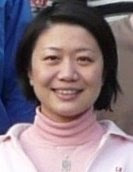Berlin is getting to be one of the most modern cities in Europe. After the fall of the Berlin Wall in 1989, Berlin became the competition arena of renowned architects worldwide. I have not had any architecture excursions in Berlin. I took some pictures during my private and business trips and it could be nice to have some reviews in my blog.
In the most recent trip, I attended the LMC conference which was held in the Ludwig-Erhard-Haus (LEH) at Fasanenstrasse, near to the subway station of Zoologische Garten, the former central railway station of West Berlin. Ludwig-Erhard-Haus designed by the British architect Sir Nicholas Grimshaw was built from 1994-1998. It is opened to host conferences and other events related to economy. The economic issue is stressed, because Ludwig Erhard in his ministry as a federal chancellor first combined social economy and free market economy, which led to great economic progress in post war in Germany. It is also located beside the German Chambers of Industry and Commerce.
Sir Nicholas Grimshaw used to apply ellipse forms and curves for his architecture. LEH is featured with 15 steel beams in ellipse forms and large glass windows. There are two inside courtyards which collect sunlight for the building. Beside the courtyards six elevators are used as the main vertical transport means, because the steps are somewhat hidden, narrow, and inappropriate to the architectural scale. So you can always see awaiting people in front of the elevators. Fortunately, there are six fast elevators. There are also many irregular halls with columns in the middle of the space, so that only part of the room could be used for presentations. Electricity sockets are often missing for laptops in each room of such buildings nowadays.
Saturday, July 26, 2008
Ludwig-Erhard-Haus, Berlin
Tuesday, July 15, 2008
An Announcement of the Final Presentation of Gaming Communities Lab
The students attending our lab course Gaming Communities give their final presentations at 18:00 tomorrow in AH II at RWTH Aachen University.
At the beginning of the Summer Term 2008, students were required to propose their own projects. The three following projects were selected from all, which builds up three groups consisting of 4-5 students.
1) Civilization IV historical scenario
2) Gaming Communities on iPhone, und
3) Empirical research on gaming vs. carreer/relationships/groups
During the semester, the students made ideas concreate and realized their proposed platform by programming. Evaluation process was also carried out. Students learned the whole life cycle of software development. The lab course requires 200 hours of work load. One group has also submitted a paper to STEG 08.
At the beginning of the Summer Term 2008, students were required to propose their own projects. The three following projects were selected from all, which builds up three groups consisting of 4-5 students.
1) Civilization IV historical scenario
2) Gaming Communities on iPhone, und
3) Empirical research on gaming vs. carreer/relationships/groups
During the semester, the students made ideas concreate and realized their proposed platform by programming. Evaluation process was also carried out. Students learned the whole life cycle of software development. The lab course requires 200 hours of work load. One group has also submitted a paper to STEG 08.
Thursday, July 03, 2008
CfP: CSTST'08
The fifth international conference on soft computing as transdisciplinary science and technology (CSTST '08) will be held in Ergy Pontoise/Paris, 27-31 October, 2008. The paper submission deadline is 6 July, 2008. Soft computing is a new research area related to soft science. Fuzzy logic and probabilistic are part of key issues in soft computing. Soft Computing is defined in Wikipedia as:
Soft computing refers to a collection of computational techniques in computer science, artificial intelligence, machine learning and some engineering disciplines, which attempt to study, model, and analyze very complex phenomena: those for which more conventional methods have not yielded low cost, analytic, and complete solutions. Earlier computational approaches could model and precisely analyze only relatively simple systems. More complex systems arising in biology, medicine, the humanities, management sciences, and similar fields often remained intractable to conventional mathematical and analytical methods.
Soft computing refers to a collection of computational techniques in computer science, artificial intelligence, machine learning and some engineering disciplines, which attempt to study, model, and analyze very complex phenomena: those for which more conventional methods have not yielded low cost, analytic, and complete solutions. Earlier computational approaches could model and precisely analyze only relatively simple systems. More complex systems arising in biology, medicine, the humanities, management sciences, and similar fields often remained intractable to conventional mathematical and analytical methods.
Subscribe to:
Comments (Atom)




